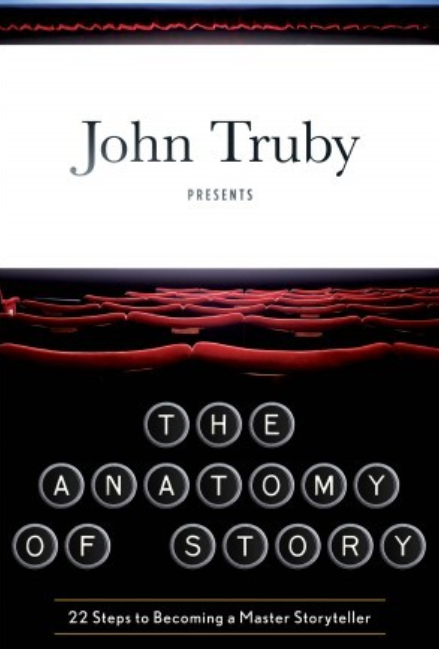Ripped from Hollywood: The Anatomy of Fundraising Storytelling – How to Insert Donors into Your Narrative
 6 Components Every Well-Told Fundraising Story Must Have
6 Components Every Well-Told Fundraising Story Must Have
The power of story in fundraising is well-known.
What’s less well-known is how to tell a story well, such that it motivates donors to want to take action.
Besides fundraising copywriting, I’ve studied screenwriting for a while, and it’s interesting that the core elements of stories are pretty much universal, across all genres, mediums, and eras, with very few exceptions. Fundraising storytelling is no different.
What follows is a brief walk-through of the core components of every story, adapted to the unique world of fundraising. The more effectively and consistently you follow this pattern in your fundraising stories, the more money your donors will happily send your way.
Fundraising Storytelling Blueprint
Stage 1: Unacceptable Reality
Filmmakers call this the ‘normal world,’ or the ‘problem’ for which there seems to be no solution, or no one to solve it.
In fundraising, I call it the unacceptable reality, because whatever’s going on that your charity is fighting to change, it’s unacceptable.
Whether it’s injustice against an oppressed people, animal abuse, human trafficking, the loss of art, domestic violence, natural disasters, or any of the many other things we’re fighting against, what’s going on now simply cannot continue.
Take some time to paint this picture in your fundraising stories.
This is where you describe how terrible something is. Ideally, you can hone it down to a single unit – one person, one family, one community.
Stage 2: Introduce the Villain – Antagonist Causing Reality to Persist
Why is there abuse, suffering, injustice, or poverty? Is the government causing it or turning a blind eye and not enforcing the law? Are people ruled by fear and afraid to say anything for some reason? Maybe it’s just entrenched apathy. Or maybe it’s really specific, like she can’t pay the rent and will lose her home if something isn’t done.
Find a villain in your story. Doesn’t have to be a person. The antagonist is whatever or whoever is causing the unacceptable reality to remain in place.
Good stories need an enemy.
Stage 3: Protagonist – Fighting Against the Status Quo
Who’s going to come to the rescue of whoever is suffering in the unacceptable reality?
This person has courage, cleverness, and compassion, and will bring whatever resources they have to save the people in distress, solve the problem, and right the wrong.
 In your story, who’s the protagonist?
In your story, who’s the protagonist?
Tricky question, because you might have thought of your staff, or your volunteers, or perhaps even yourself.
But in the best fundraising storytelling, the protagonist is your donor. They are the heroes. They fill the gap of what’s missing in the fight against the antagonistic force.
When the donor sees themselves in your story, they’ll rise to the challenge and save the day.
Stage 4: Complication Preventing the Protagonist from Winning
You could also call this the “need.” Everyone loves being the hero, but what do they have to do to save the day?
This is where your offer, or call to action, comes in the story.
Whatever it will take to make the unacceptable reality change, that’s what goes here. It could be money, more volunteers, passing a law (aided by signing a petition), infrastructure, education, awareness, or many other things.
Whatever it is you want your donors to do, that’s what goes here.
Stage 5: The Final Battle 
Every good story has a final and ultimate conflict, where all the stakes are up for grabs, and the suspense comes from our uncertainty about who will triumph.
In fundraising storytelling, this is why deadlines and urgency are so effective. We must raise $10,000 by Friday, or something really terrible will continue happening.
To win the final battle, we must reach a specific goal, and this is what it takes to get there.
In your storytelling, this is why it’s better to send out multiple items and ongoing communication. Whether email, direct mail, social media, or all of these and more, continue pushing the narrative as you get closer to the end. Utilize the Principle of Momentum to keep people engaged and passionate about the outcome.
Fundraising Storytelling Example – Online Sex Trafficking Victory
In some instances, the final battle isn’t directly related to money. I referenced the following story in an earlier post, but it’s a perfect example of how to tell a complete fundraising story. It also illustrates how sometimes that story will spread out over years.
The recent ruling that put websites such as backpage.com on notice that they are liable for girls and boys being sex trafficked on their sites was a huge victory against this particular injustice.
So for charities working toward that goal, let’s look at the story they’ve been telling for years.
- Unacceptable reality: Underage kids are being trafficked online, and their lives are being ruined.
- Villain: Backpage.com and other websites that sell the ads but claim they are innocent and oblivious about who is hurt by it, saying it’s not their responsibility.
- Protagonist: Donors and supporters fighting to change the law and make these sites liable for the exploitation they are facilitating.
- Complication: Changing laws is hard, and it takes continued lobbying of Congress and state lawmakers. It won’t happen unless we make it happen.
- Final battle: Finally, backpage.com was held liable for the ads that get posted on their site. Trafficking of girls was ended on their platform, and the owners of Backpage were criminally charged.
This was an ongoing fight that took years to win. So when you win, you make sure everyone knows that their work has paid off.
Stage 6: Thematic Revelation
 I love this term. Credit for it goes to John Truby in his book The Anatomy of Story.
I love this term. Credit for it goes to John Truby in his book The Anatomy of Story.
This happens after the main conflict and story has ended, or sometimes in the midst of the final battle. But the idea is profound, especially for fundraising. Here’s the concept:
Thematic revelation is when the audience, not the people in the movie, discover something that opens their eyes, minds, or hearts to a new idea about how to live that they hadn’t known before.
In effect, they “learn” something new, but not factual knowledge. It’s moral knowledge, a new way to see the world. One classic example is It’s a Wonderful Life. When George Bailey (James Stewart) realizes how terrible the world would be if he’d never been born, his whole outlook on life changes.
But the reason the movie is still known and celebrated 70 years later is because of what the audience learns at the same time. Without ME, the world would also be a worse place, because I too am making a difference. It’s a self-affirming thematic revelation that my life matters, because people around me depend on me and have benefitted from my influence in their lives.
We’re beaten down so much by life that it’s easy to conclude it’s irrelevant and makes no difference, so why not get drunk and jump off a bridge (as Bailey almost does in the movie).
In fundraising storytelling, you should strive to give your audience (donors, readers, volunteers) a thematic revelation whenever a part of your story reaches an ending – whether that ending worked in your favor or not.
Don’t miss that. Even if your campaign ‘fails’ in some way, you still tell the story, and you still give your readers a thematic revelation.
The best place to do this is in the thank you letter.
Strive to do more than just thank them. And try to go beyond just sharing the impact of what they’ve done. Try to connect their action to something deeper, something that makes them believe differently, or think differently, about what their participation in this campaign means.
Here’s a sample from part of a post-fundraising event email that attempts to do this:
What’s the audience’s revelation here? There are two parts, both hitting the same note.
The first part refers to girls who’ve lived in this safe home so long they’re now getting ready for college. That major life transition happens for people in the US all the time. But for kids in very poor developing countries who have no families, it’s a big deal.
So this sentence connects readers to more than just the stuff in the first paragraph. It’s a lifelong impact, and they’re just like my kids, wanting the same things, having the same dreams. My empathy as a reader deepens.
The second part is in the bold, where it says there’s room for more. Not only am I as a donor giving these kids the same things I’d want for my kids, but my connection will keep growing because there’s “room for more.”
Not too complicated. Doesn’t have to be Pulitzer Prize copywriting.
Thematic revelation does more than just thank them, give the final amount raised, and put out a perfunctory statement of impact. Give them something deeper, something that connects to our shared humanity. Make them think bigger about what they’ve done.
That’s fundraising storytelling.
Does the Order Matter?
Do you have to present these six core storytelling components in this order? Not necessarily. Every campaign is a little different. So don’t box yourself in.
But these six elements should show up somewhere in your fundraising stories. Storytelling isn’t science, and there’s no template that works best every time.
Now, go write some great fundraising.
Or – get a fundraising storyteller like me to write them for you.



